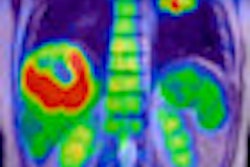The American Society of Echocardiography (ASE) and the Society of Cardiovascular Anesthesiologists (SCA) have released a new performance guideline for increasing the use of ultrasound in guided vascular cannulation. The guideline also contains recommendations on training for these procedures.
The guideline recognizes and promotes the use of ultrasound technology to place catheters into major veins and arteries through visualization of these vessels beneath the skin. The guidelines follow the recommendations of the Agency for Healthcare Research and Quality in its 2001 report, "Making Health Care Safer: A Critical Analysis of Patient Safety Practices," which recommended the use of ultrasound for the placement of all catheters in major veins as one of 11 recommended practices aimed at improving patient care.
Comprehensive practice guidelines and recommendations are made on the use of ultrasound to place catheters into the internal jugular veins, subclavian veins, and femoral veins based on scientific evidence currently present in the literature. The role of ultrasound for placing large catheters into infants and children is discussed specifically, along with the use of ultrasound for placing catheters into arteries and peripheral veins. Recommendations are made for training clinicians on incorporating ultrasound into their practice, including the role of simulation.
Dr. Christopher Troianos, a professor and chair of anesthesiology at the Western Pennsylvania Hospital in Pittsburgh, was the lead author on the guideline document, titled "Guidelines for Performing Ultrasound Guided Vascular Cannulation: Recommendations of the American Society of Echocardiography and the Society of Cardiovascular Anesthesiologists." The guideline will appear in the December 2011 issues of the Journal of the American Society of Echocardiography and Anesthesia & Analgesia, and it is also available on the ASE's website.



















